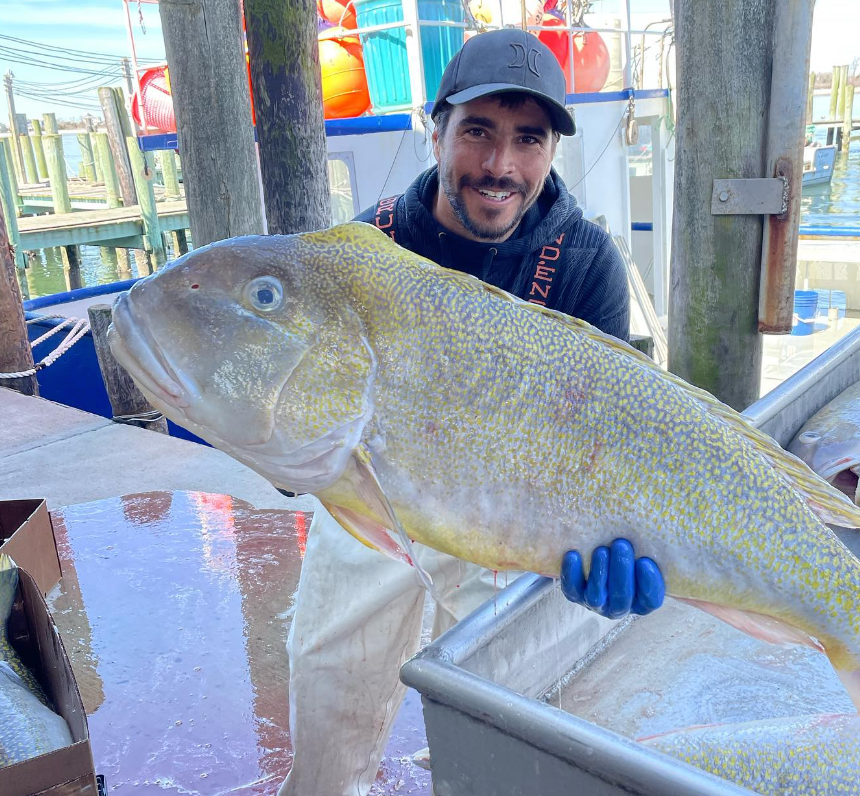
Tilefish
About tilefish
Tilefish also known as the clown of sea are colorful, iridescent fishies! They are mainly found in sandy areas in temperate and tropical waters. Tilefish seek out shelter in their self-made burrows and caves in reefs or rocks. Generally tilefish try to stay near the ocean floor. With amazing eyesight, tilefish feed during the day, most often on small organisms like shrimp, crabs, clams, and sea cucumbers.
Storage and Cleaning
- Store the fresh fish in the coldest part of your refrigerator (32 degrees Fahrenheit) for up to two days.
- To freeze your fish, wrap it tightly in aluminum foil, plastic wrap, or freezer paper to prevent freezer burn. Place the wrapped fish in a heavy duty freezer bag if you'd like to go the extra mile! Freezing your raw tilefish will preserve the fish for about 2 to 3 months.
Cooking
- Since tilefish eat mainly crustaceans, their meat has been described as lobster or crab-like. Firm and mild tasting, tilefish can be pan-seared, oven-roasted, and fried. Check out our recipes page for inspiration!
More on tilefish
Tilefish are a deep water fish. They were not known to scientists or fish eaters until 1879 when a Captain Kirby, who was trawling for cod near Nantucket, unexpectedly caught 5,000 pounds of the previously unknown fish. News spread of its pleasant texture and charismatic flavor, and the tilefish market exploded. But just a few years later, the fish disappeared, experiencing a mysterious mass mortality event. It wasn’t until a decade later that another tilefish catch was recorded, but the fish didn’t immediately regain its hot status.
Then, in 1971, Barnegat Light fishermen Lou Puskas and Nelson ‘Hammer’ Beideman caught 3,000 pounds of tilefish while prospecting along the Hudson Canyon. Puskas is often credited for reviving the tilefish fishery, and Barnegat Light has been deemed the “tilefish capital of the world.” In fact, Viking Village, the dock that Fishadelphia bought your tilefish from, owes its origins to Lou Puskas. Fifty years ago, Captain Puskas and Captain John Larson bought a dock at 18th St to pack out their tilefish. Today that dock has become Viking Village, and it’s still run by the same two families.
Tilefish is an underutilized fish, meaning it hasn’t gotten the attention it deserves (especially given how scrumptious it is). Buying underutilized fish creates more opportunity for local, independent fisherfolk to make a living; lessens pressure on more popular, overfished species; and makes for new seafood experiences! We’re happy to see more and more professional chefs and home cooks featuring tilefish on their plates.
Golden tilefish is the largest of six tilefish species found along the Eastern Seaboard and and in the Gulf. Wild-caught golden tilefish is a smart seafood choice because it’s responsibly harvested under U.S. regulations. The golden tilefish fishery in the U.S. is managed from Maine through Virginia, with the majority of the fishery concentrated between Nantucket Island, MA to Cape May, NJ; more specifically between Hudson and Veatch Canyons. The commercial fishery predominantly uses longline gear, although handline, rod and reel, and trawl gear are also authorized. Golden tilefish is often sold for sushi.
Photo: @vikingvillagelbi, Viking Village fisherman holds a jumbo golden tilefish
Last updated: 1/3/2023